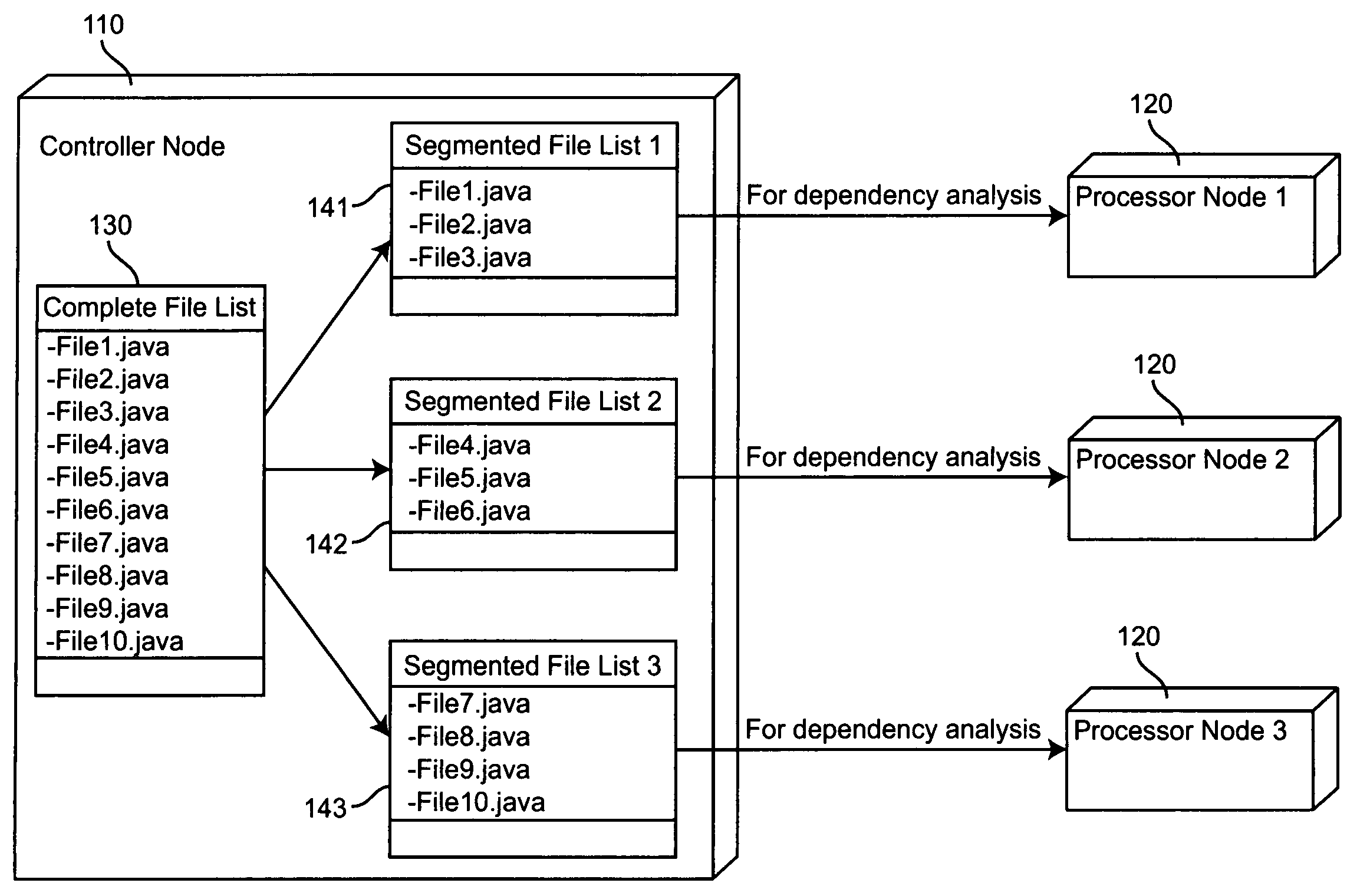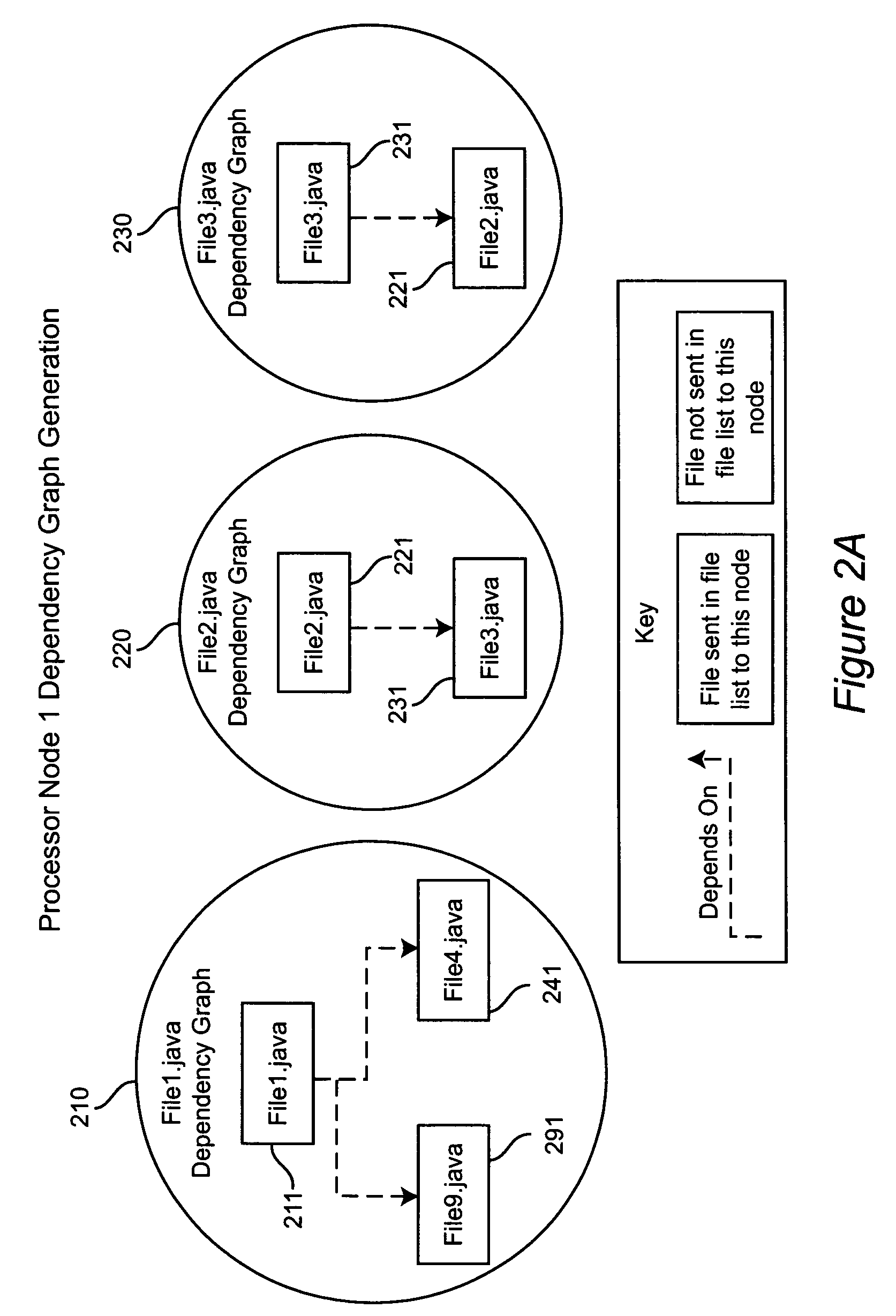System and method for grid-based distribution of Java project compilation
a technology of project compilation and distribution method, applied in the field of large project compilation, can solve the problems of java's automatic dependency mechanism, complex process of automatic distribution of java project compilation across multiple systems, and inability to automatically distribute a compilation of a java project across multiple systems, so as to improve the build time
- Summary
- Abstract
- Description
- Claims
- Application Information
AI Technical Summary
Benefits of technology
Problems solved by technology
Method used
Image
Examples
Embodiment Construction
[0022]Referring now to the drawings, and more particularly to FIG. 1, there is shown the controller 110 and compilation nodes 120 for using multiple processors to compile a large Java project. The invention is implemented with the following steps:[0023]1. The controller 110 synchronizes every node 120 with every compilation unit in the Java project.[0024]2. The controller 110 performs a scan for every file changed since the last compilation (or all files if never compiled before), finding out the length of each source file. This list is segmented equitably based upon number of lines in each of the files, so that each compilation node will have a list of files that are to be compiled. For the example shown in FIG. 1, the complete list of files changed since the last compilation 130 is segmented equitably into file lists 141, 142 and 143.[0025]3. The controller 110 sends each compilation node's list to that compilation node. For the example shown in FIG. 1, file lists 141, 142 and 143...
PUM
 Login to View More
Login to View More Abstract
Description
Claims
Application Information
 Login to View More
Login to View More - R&D
- Intellectual Property
- Life Sciences
- Materials
- Tech Scout
- Unparalleled Data Quality
- Higher Quality Content
- 60% Fewer Hallucinations
Browse by: Latest US Patents, China's latest patents, Technical Efficacy Thesaurus, Application Domain, Technology Topic, Popular Technical Reports.
© 2025 PatSnap. All rights reserved.Legal|Privacy policy|Modern Slavery Act Transparency Statement|Sitemap|About US| Contact US: help@patsnap.com



